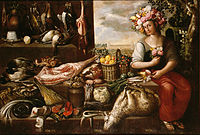
Francisco Barrera was a Spanish painter, best known for his appeal on behalf of his fellow artists against taxes proposed by the Spanish government in 1640.

Francisco Barrera was a Spanish painter, best known for his appeal on behalf of his fellow artists against taxes proposed by the Spanish government in 1640.

Francisco José de Goya y Lucientes was a Spanish romantic painter and printmaker. He is considered the most important Spanish artist of the late 18th and early 19th centuries. His paintings, drawings, and engravings reflected contemporary historical upheavals and influenced important 19th- and 20th-century painters. Goya is often referred to as the last of the Old Masters and the first of the moderns.

Claudio Coello was a Spanish Baroque painter. Coello is considered the last great Spanish painter of the 17th century.

Major General Antonio Cosme Imbert Barrera was a Dominican military officer and the 44th President of the Dominican Republic from May to August 1965.
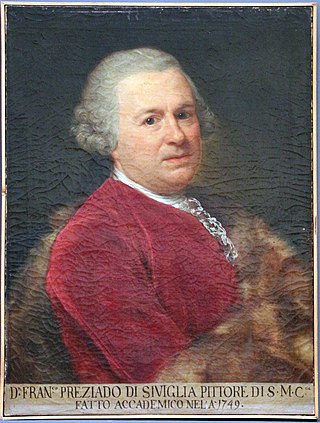
Francisco Preciado de la Vega (1713–1789) was a Spanish painter, active mainly in Italy. He was involved in a number of artists' associations in Rome, both as a member and an officer.
Francisco López Caro (1578–1662) was a Spanish painter of the Baroque period. Born in Seville, he was a pupil of Juan de las Roelas. He painted with indifferent success in Seville until about 1660, when he went to Madrid where he spent the remainder of his life, and died in 1662. His works were mainly portraits, some of which are in private collections in Madrid, Salamanca, Granada, and Seville.
Mosen Vicente Bru (1682–1703) was a Spanish painter. He was born at Valencia. He was the pupil of Juan Conchillos. He painted for the churches in his native city, including a St. Francisco de Paula, a Baptism of Christ by St. John, and an All the Saints for the church of San Juan del Mercado.

Michael Bryan was an English art historian, art dealer and connoisseur. He was involved in the purchase and resale of the great French Orleans Collection of art, selling it on to a British syndicate, and owned a fashionable art gallery in Savile Row, London. His book, Biographical and Critical Dictionary of Painters and Engravers, first published in 1813–1816, was a standard reference work throughout the 19th century, and was last republished in 1920; however it is now badly outdated.
Francisco de Amberes, was a Spanish painter from Toledo, the cathedral of which he ornamented with his pictures in 1502. From 1508 to 1510 he painted, in conjunction with Juan de Borgoña and Juan de Villoldo, the arabesque chapel, which is still an interesting object.
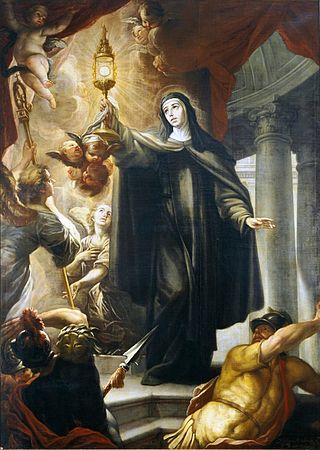
Isidoro Arredondo (1655–1702), an eminent Spanish painter, was born at Colmenar de Oreja, in 1653. He was first a scholar of José García Hidalgo, but he afterwards studied under Francisco Rizi. He painted history with much success, and on the death of Rizi, in 1685, he was appointed painter to Charles II of Spain. One of his principal works was a large picture of the 'Incarnation,' which Palomino mentions as a very grand composition along with Santa Clara (1693) and Santa Gertrudis. He painted much in oil and fresco in the churches and palaces, and the ' 'Legend of Cupid and Psyche,' in the royal palace, is considered one of his best works. He died at Madrid in 1702.
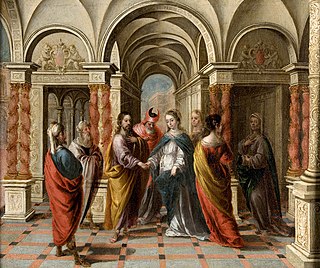
Matías de Arteaga y Alfaro, also Matias de Arteaga, was a Spanish painter and engraver.
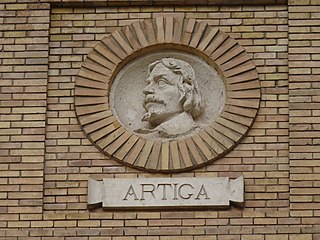
Francisco de Artiga, a celebrated Spanish landscape and historical painter, was born at Huesca, about 1650. He painted several 'Sibyls,' 'Conceptions,' and perspective views, remarkable for their invention, design, and colouring. He was also an engraver, an architect, a mathematician, and an author of reputation. He died in 1711 at Huesca.

Geronimo de Bobadilla, also Jerónimo de Bobadilla, (1630–1709) was a Spanish painter.
Francisco Bustamante was a Spanish painter.
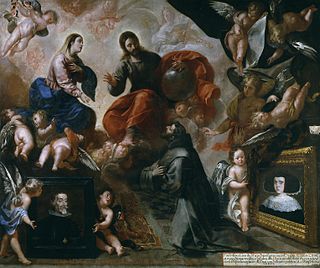
Francisco Caro was a Spanish Baroque painter.
Antonio Castrejon (1625–1690) was a Spanish painter.
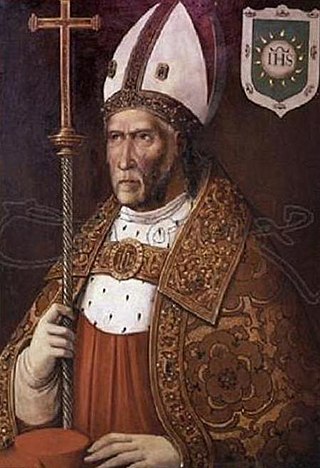
Francisco de Comontes, was a Spanish painter.

Manuel de la Cruz (1750–1792) was a Spanish painter. He was born and died in Madrid. He distinguished himself by his pictures in the cathedral of Carthagena and in the monastery of San Francisco el Grande at Madrid. In the Gallery of the latter city there is a painting by him of The Annual Fair at Madrid. He also etched a few plates of heads of strongly marked character.
Pedro de las Cuevas, a Spanish painter, was born at Madrid in 1568. According to Palomino, he painted several pictures for private collections, for which he was more employed than for public edifices. He gained, however, more celebrity by his academy than by his own works. Some of the most distinguished painters of the time, such as José Leonardo, Antonio Pereda, Antonio Arias, and Juan Carreño, were educated in his school, called the School of Madrid, which was distinguished for its extraordinary and masterly colouring. He died at Madrid in 1635. His stepson, Francisco Camilo was also his pupil.
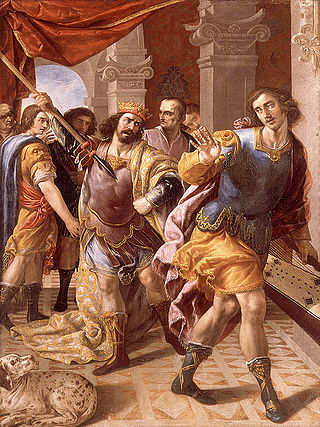
Francisco Fernández, who was brought up in the school of Vincenzo Carducho, was one of the most ingenious artists of his time, and his talent gained great reputation for him at an early age. He was employed by Philip IV in the palaces at Madrid, and in the convent of La Victoria are pictures by him of the Death of St. Francis of Paola, and St. Joachim and St. Anne. He also etched five spirited plates of allegories for Carducho's Dialogos de la Pintura, 1633. He was killed in a quarrel by Francisco de Baras.